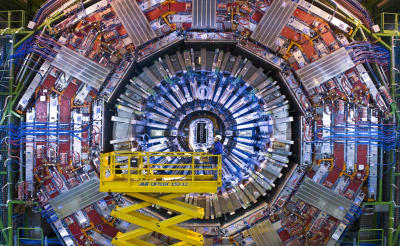Here’s an interesting thought, what if black holes didn’t exist but instead a collapsing star underwent a quantum critical phase change, turning into a rather peculiar, but QM compliant, object ?
This is what two physicists from LANL believe could be happening.
The report in New Scientist says:
[…] Chapline and Laughlin found some answers in an unrelated phenomenon: the bizarre behaviour of superconducting crystals as they go through something called “quantum critical phase transition” (New Scientist, 28 January, p 40). During this transition, the spin of the electrons in the crystals is predicted to fluctuate wildly, but this prediction is not borne out by observation. Instead, the fluctuations appear to slow down, and even become still, as if time itself has slowed down.
“That was when we had our epiphany,” Chapline says. He and Laughlin realised that if a quantum critical phase transition happened on the surface of a star, it would slow down time and the surface would behave just like a black hole’s event horizon. Quantum mechanics would not be violated because in this scenario time would never freeze entirely. “We start with effects actually seen in the lab, which I think gives it more credibility than black holes,” says Chapline.
With this idea in mind, they – along with Emil Mottola at the Los Alamos National Laboratory in New Mexico, Pawel Mazur of the University of South Carolina in Columbia and colleagues – analysed the collapse of massive stars in a way that did not allow any violation of quantum mechanics. Sure enough, in place of black holes their analysis predicts a phase transition that creates a thin quantum critical shell. The size of this shell is determined by the star’s mass and, crucially, does not contain a space-time singularity. Instead, the shell contains a vacuum, just like the energy-containing vacuum of free space. As the star’s mass collapses through the shell, it is converted to energy that contributes to the energy of the vacuum.
The team’s calculations show that the vacuum energy inside the shell has a powerful anti-gravity effect, just like the dark energy that appears to be causing the expansion of the universe to accelerate. Chapline has dubbed the objects produced this way “dark energy stars”.
A really intriguing possibility and one that, they believe, could be verified or disproved in 5-10 years.
